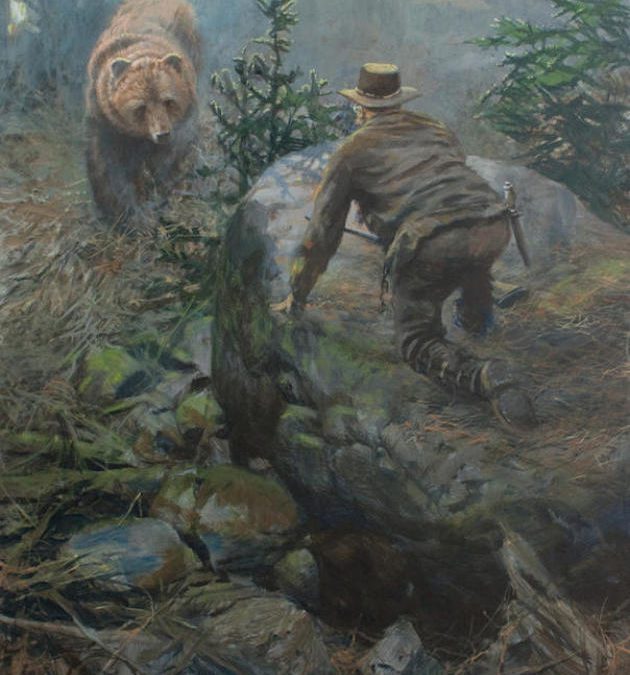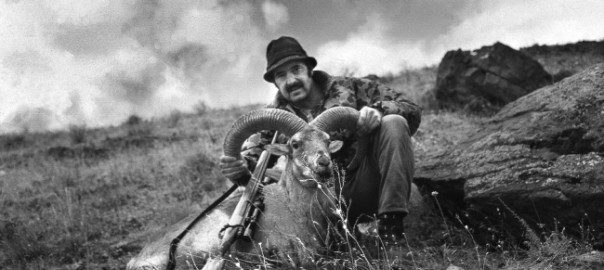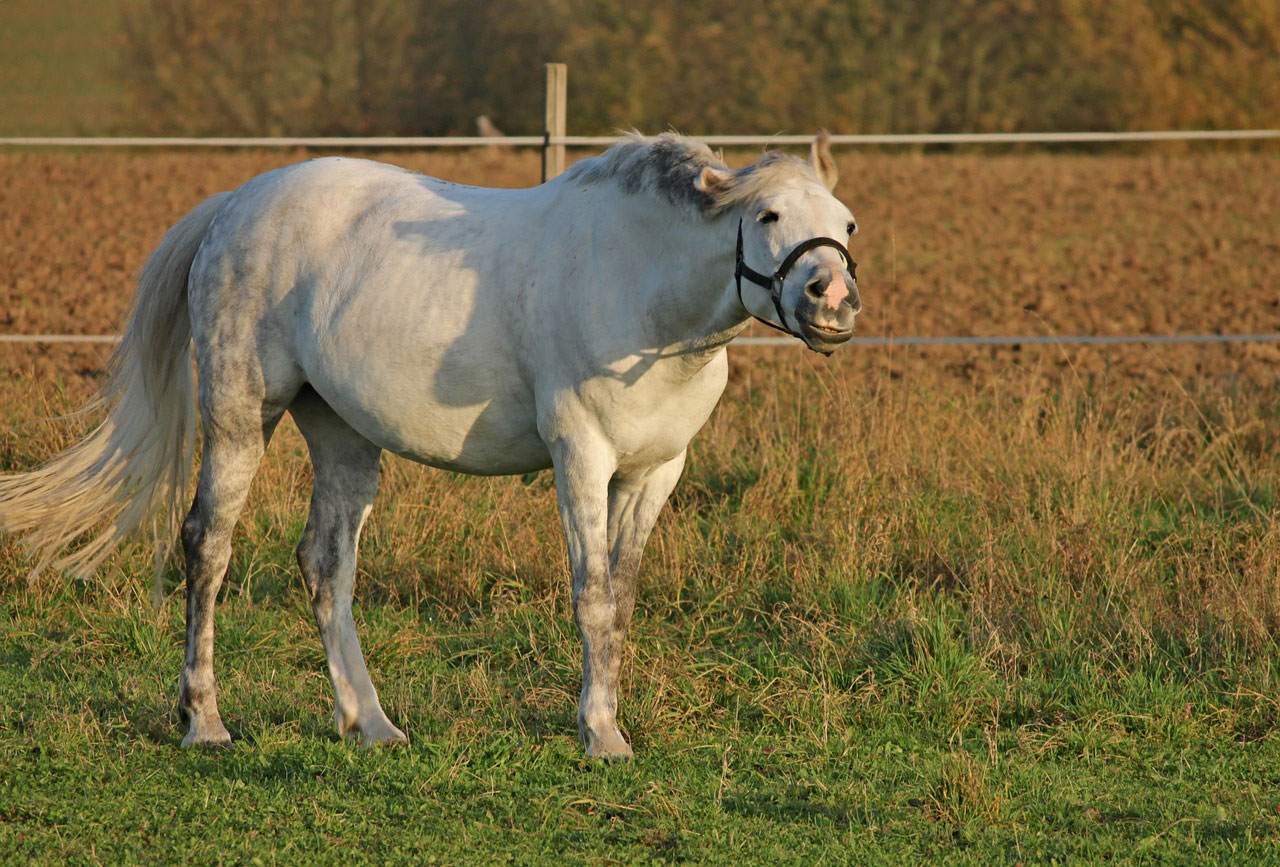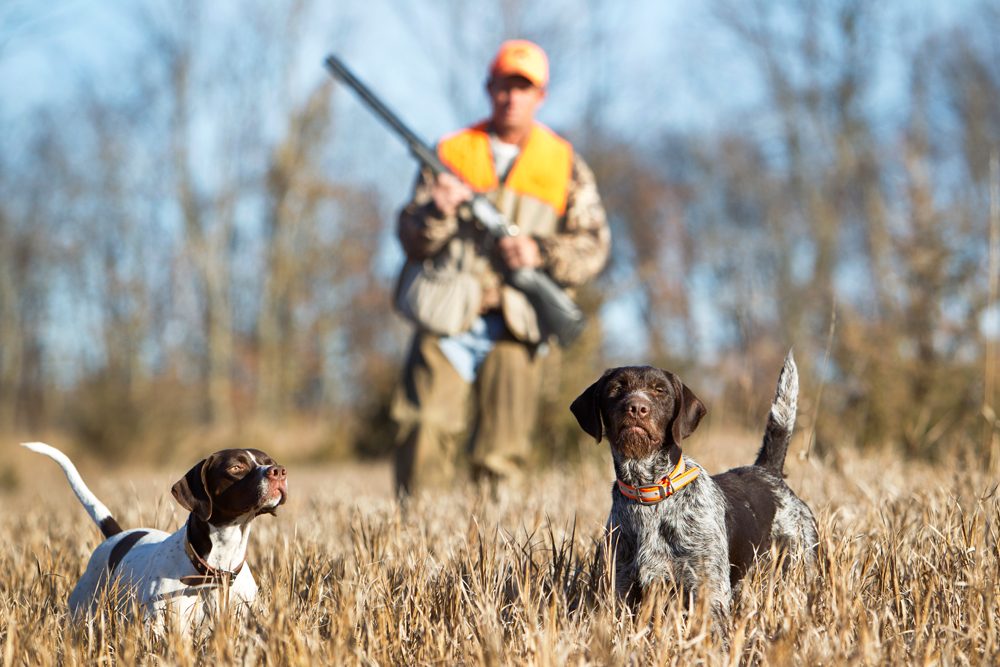Theodore Roosevelt waits over an elk carcass for a monster grizzly bear at the headwaters of the Madison River in the fall of 1889.
The late-afternoon gloom began to close in on the valley floor. It was already dark beneath the trees, and there was a slight chill in the air. The sounds of forest life were slowly being quelled by an eerie silence. Nothing was moving except in one’s own imagination. It was September 1889 at the headwaters of the Madison River, and Theodore Roosevelt was lying in wait for a grizzly. Some time earlier he had discovered that a bear had visited the remains of an elk he’d killed not far from camp. TR saw this as an ideal opportunity to bag a grizzly and decided to lay in wait for its return.
Gun in hand, and wearing his favorite buckskin clothes and moccasins, he had set out that afternoon to find a place where he could hide yet have a clear view of the carcass. TR walked through the ever-darkening forest, treading softly on a carpet of moss and pine needles. Alert for any sounds, he proceeded cautiously, knowing the grizzly was most likely close by and could be watching him.
Bears are very protective of their caches and will defend them to the death. Many hunters and outdoorsmen have been attacked by grizzlies when accidentally coming across their kills. More often than not a bear will dash from cover at lightning speed and maul the unfortunate hunter.
TR knew the exact location of the dead elk but kept an eye out for the grizzly all the way to the site. As he neared the spot, he paused to scan the surrounding forest and listen for any sound that might give away the bear’s presence.
The carcass lay in the center of a deep valley within a forest of tall pines. Scattered throughout the undergrowth were large rocks covered in lichens and mosses. TR noticed one flat-topped rock surrounded by small conifers. It was not too high, and he found it easy to climb. Once on top he enjoyed a good view of the carcass, which the bear had tried to bury. On top of the rock was a carpet of soft pine needles, upon which TR rested, his body screened by the cluster of conifers.
He remained there for several hours until the sun had all but gone behind the mountains and twilight had forced its way through the thick canopy. The silence was almost overpowering, and TR felt overcome with trepidation and melancholy in the primeval stillness. Every sound was amplified in the growing darkness, and his heart beat a little faster at the slightest noise.
The wilderness can be a lonely place at twilight, he thought.
As he peered into the gathering dusk, Roosevelt was surprised when a big bear suddenly stepped out of the bushes and strode silently over the pine needles toward the kill. In the half-light the grizzly looked huge and somehow unreal. TR remained motionless as it drew nearer, but his heart was pounding.
As if hearing TR’s heartbeat, the bear stopped and looked around, then sniffed the air as it reared onto its big hind legs. Peering over the conifers, the standing bear looked like a giant statue with its head backlit by the last rays of the setting sun. TR was so close that he could see the animal’s breath in the chilled air.
TR felt sure the bear could see him atop the rock and decided to make the first move. Stiff from lying in one position for such a long time, he struggled to lift the rifle to his shoulder.
As the great bear dropped to all fours and reached out to paw at the carcass, TR put a bullet between its shoulders, knocking the huge beast to the ground. Roaring loudly, the bear struggled to its feet and staggered off, then fell again. It managed to regain its footing, and TR put a second shot into the bruin.
Before Roosevelt could climb down from his perch, the great bear was back up, lumbering toward a nearby thicket. TR fired one last time, ending the ordeal once and for all.
The next day Roosevelt returned with his helpers, who skinned and packed the grizzly’s hide and meat back to camp. It would be one of several bears taken by TR during his many years of hunting.
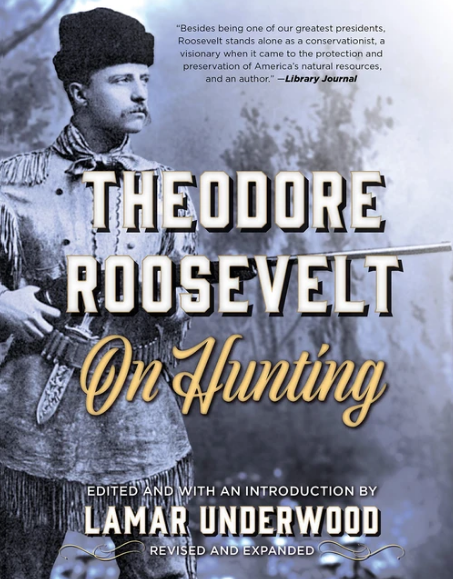 There have been few hunters as daring, as powerful, and as articulate as our twenty-sixth president, Theodore Roosevelt. From his ranching years in the Dakota Territory to the famous African adventures, Roosevelt’s tales are unparalleled stories of the hunt. The best of them are collected here.
There have been few hunters as daring, as powerful, and as articulate as our twenty-sixth president, Theodore Roosevelt. From his ranching years in the Dakota Territory to the famous African adventures, Roosevelt’s tales are unparalleled stories of the hunt. The best of them are collected here.
Of Roosevelt’s many volumes of hunting and exploration, two reader favorites have always been Ranch Life and the Hunting Trail and African Game Trails, both excerpted here. During his ranching years, Roosevelt ranged far and wide, and his African trips were also famously bold. In all his expeditions, Roosevelt reveals in detail hunts that were incredible journeys of both pursuit and discovery, for wherever he went in the outdoors he assumed the dual roles of hunter and naturalist. Buy Now

